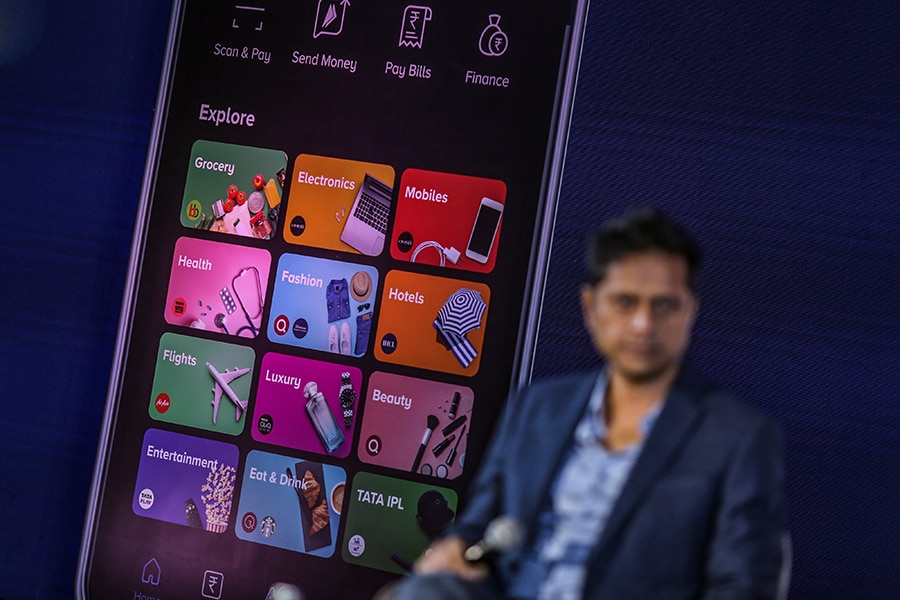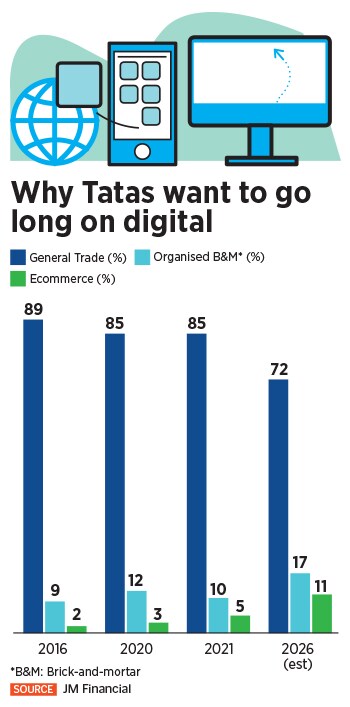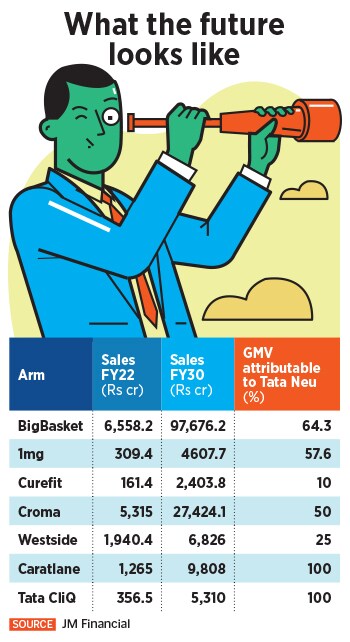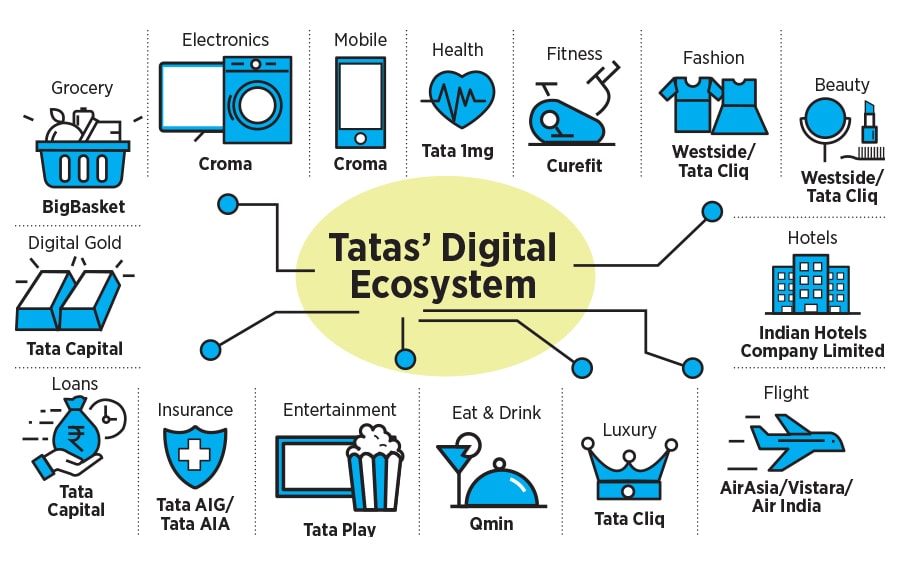In India, among others, super apps have tried offering everything from travel bookings to groceries, lifestyle items, and making payments under one platform. Yet, unlike China where WeChat alone has over a billion users, India’s smartphone user base with some 750 million users has largely denounced turning to super apps, and instead focussed on using multiple apps for their daily use. Perhaps that had to do largely with an Indian mindset akin to the physical world, where buyers tend to often try out numerous stores or shops before finalising a purchase.
For instance, despite its humongous presence in the ecommerce space in India, Amazon is yet to find similar success with its payment platform, Amazon Pay, housed within the app. Amazon offers services such as travel bookings and insurance on that platform, but is yet to find many takers. India’s instant real-time payments are led currently by the likes of PhonePe and Google Pay.
“With practically unlimited 4G and smartphones getting very good, the smartphone could now handle 50 apps, and there was no need for a super app," Kavin Mittal, founder of Hike, had told Forbes India earlier on why the company decided to pivot from its super app plans in 2019.
Yet, despite the limited success, super apps are slowly beginning to catch the fancy of numerous conglomerates, and leading that pack is the salt-to-steel conglomerate Tata group which had in April launched Tata Neu. Developed by Tata Digital, Tata Neu brings users a unified platform offering an omnichannel experience with loyalty at the centre of it, according to the group. The group had built up a war chest of some $2 billion to be deployed into the app that offers everything from shopping to a suite of financial offerings, including UPI, bill payments, loans and insurance.
“The Tata group is focussed on transforming businesses for the digital world, and in the consumer context, bringing them together into a unified platform that offers an omnichannel experience," N Chandrasekaran, chairman, Tata Sons, had said at the time of the launch. “With Tata Neu, we are focussed on making the lives of Indian consumers easier. The power of choice, a seamless experience and loyalty will be at the centre of Tata Neu, delivering a powerful One Tata experience to Indian consumers."
To do that, the company is banking on its large network of companies that include the grocery business, online pharma, airline ticketing, electronics stores, automobiles and apparel business, among others. Tata Neu is currently home to several brands, including AirAsia India, BigBasket, Croma, IHCL, Qmin, Starbucks, Tata 1mg, Tata CLiQ, Tata Play and Westside.
Together, these brands have a cumulative consumer base of 120 million users, 2,500 offline stores, along with an 80 million app footprint across its digital assets. “The app will continue to grow as more brands and categories get on-boarded," the group had said in April. That means the likes of Air India, Vistara, Tanishq and Tata Motors could join the app soon. The group is also planning to on-board brands outside the Tata stable soon.
“Tata, with its Neu app, is aiming to bring together a host of Tata’s services and brands under one umbrella embarking on a focussed digital strategy for consumers," says Tarun Pathak, research director at Gurugram-based Counterpoint Technology Market Research. “The app will help Tata in understanding the consumer buying patterns, cross-sell different products, bundle products and promotions across platforms, thus increasing customer retention. It is also convenient for consumers to maintain a single easy-to-use app, rather than many individual apps, in an already-cluttered app drawer."
![]() The Tata NEU app displayed during a news conference in Mumbai, India, on Thursday, April 14, 2022. Tata Digital Pvt."s digital services platform, Tata Neu, will have in-house brands including Croma, Westside, AirAsia India, the Taj chain of luxury hotels and BigBasket, according to the group"s website.Image: Dhiraj Singh/Bloomberg via Getty Images
The Tata NEU app displayed during a news conference in Mumbai, India, on Thursday, April 14, 2022. Tata Digital Pvt."s digital services platform, Tata Neu, will have in-house brands including Croma, Westside, AirAsia India, the Taj chain of luxury hotels and BigBasket, according to the group"s website.Image: Dhiraj Singh/Bloomberg via Getty Images
Can it work?
While it is still in its early phase, Tata’s gamble with the super app certainly has some underlying potential. Launched amidst the recently concluded Indian Premier League (IPL), of which Tata was the title sponsor, the group has reportedly managed to clock gross sales between $120 million and $150 million. The target is reportedly set at $200 million a month, taking annual gross sales to some $2.5 billion.
“While Tata is ticking all the right boxes in their digital shift, the mere enormity of this transition makes this an audacious endeavour," Abhishek Kumar, equity analyst at market research firm JM Financial, said in a recent report. “Drawing lessons from Walmart’s pivot to ecommerce, we believe Tata will need sustained investments in this space to succeed. That said, we believe there is a lot of value in the Tata ecosystem that Tata Digital can help unlock. Based on the GMV (gross merchandise value) of key categories on Tata Neu, we believe the value of Tata Digital could be upwards of $15 billion."
![]() Much of the differentiating factor that Tata Neu offers is its loyalty programme, a single reward points programme for all the brands. For example, points earned by spending on a hotel can be used by consumer appliances in Croma which gives consumers a lot more flexibility and incentive to transact through the app.
Much of the differentiating factor that Tata Neu offers is its loyalty programme, a single reward points programme for all the brands. For example, points earned by spending on a hotel can be used by consumer appliances in Croma which gives consumers a lot more flexibility and incentive to transact through the app.
“Super apps have been launched in India before… for example, MyJio, Paytm, and others as well. However, the prime success example comes from WeChat in China. One of the reasons for WeChat’s success has been the stickiness and frequent usage of its core service—chatting," adds Pathak of Counterpoint. “This, in turn, provided a platform to integrate other services around it. This is a factor that is missing in super apps in India. Strategic expansion of an app into newer and more sticky categories, with the use of loyalty programme, can help bridge this gap."
Over the past few years, since the Tata group began its ambitious ecommerce play, the company has acquired ecommerce company BigBasket, online pharma company 1mg, and health and fitness company Curefit. In addition, it has been working closely with its group arms to pivot many of the consumer-facing companies into the digital ecosystem, including the likes of Titan and Croma, and in the process built up a large omnichannel network.
India’s e-tailing market is currently dominated predominantly by lifestyle and consumer electronics, which make up close to 87 percent of the overall GMV. Tatas have made available both the categories on the Tata Neu app through its lifestyle brands (Tata CLiQ and Westside) in addition to its consumer electronics brand (Croma). “Further, the acquisition of BigBasket has enabled Tata Neu to offer grocery—the fastest-growing e-tailing category," JM Financial says in its report. “While the presence in these categories ensures that Tata Neu’s coverage spans 95 percent of the overall e-tailing segment, we notice that it is absent from long-tail categories such as books, toys, etc. We believe long-tail products are critical for customer stickiness to a super app and should be added to Tata Neu in due course to make it a one-stop digital shop for customers."
While the user base on individual apps is still uncertain, BigBasket clocks annual revenues of over Rs6,500 crore, while Croma had revenues of Rs5,315 crore in FY22. 1mg had revenues of Rs309 crore and Westside Rs1,940 crore in the same period. All that means, Tata JM Financial reckons, that the value of Tata Digital could be upwards of $15 billion and it is expected to grow as the company on-boards other categories such as food and travel. “Several apps under the Tata umbrella, for example, BigBasket, has many users, with comparatively higher usage frequency that can migrate to the Neu app, providing Tata an edge on scaling operations," adds Pathak. “Tata also has a strong brand power which goes in their favour."
Apart from the massive opportunity in ecommerce, Tata Neu also gives the group a good understanding of the customer and in offering personalised recommendations, helping to stitch together disjointed customers. Additionally, the group is also expected to offer services from its arms such as Tata Capital which can offer loans and digital gold, while Tata AIG can offer insurance as a service, expanding its services into the lucrative finance play. Already, the consumer’s checkout across channels happens on Tata Pay’s payment gateway, giving the group a singular view of the customer’s entire journey across consumer brands.
![]() “Tata Neu is not just a mosaic of various consumer brands in one app," the JM Financial report adds. “It is an ecosystem binding various Tata brands to one platform. More than stitching together various brands, it is trying to stitch together data of these disjointed customers. This is further evidenced by the fact that NeuPass—Tata Neu’s reward programme—allows users to earn and burn NeuCoins across channels, thus binding them to the Tata ecosystem rather than the Tata Neu app." The rewards programme also has the potential to tie the customer to the Tata ecosystem in the long run, rather than on the app alone.
“Tata Neu is not just a mosaic of various consumer brands in one app," the JM Financial report adds. “It is an ecosystem binding various Tata brands to one platform. More than stitching together various brands, it is trying to stitch together data of these disjointed customers. This is further evidenced by the fact that NeuPass—Tata Neu’s reward programme—allows users to earn and burn NeuCoins across channels, thus binding them to the Tata ecosystem rather than the Tata Neu app." The rewards programme also has the potential to tie the customer to the Tata ecosystem in the long run, rather than on the app alone.
Since its launch in April, the app has been downloaded over 5 million times on Google Play Store and ranks 24th in the shopping category on iOS. The group sees massive potential in India’s consumer digital economy—pegged at $90 billion in 2020 and projected to be a $800-billion market by 2030—of which online retail will be a large slice, according to a RedSeer report. It only helps that India’s smartphone penetration has been on an upswing.
“Online retail is set to become the third-largest online retail market by scale by CY30 with an annual GMV of $55 billion in CY21 and $350 billion in CY30. Eighty-eight percent of the online shoppers that will be added between 2020 and 2030 will be from Tier II-plus cities," the RedSeer report says. “Further, $5-7 billion cumulative incremental online retail transactions to be added from Tier II-plus city customers over CY20-30 while $150 billion cumulative incremental online retail GMV to be added from Tier II-plus city customers over CY20-30." GMV is the total sales volume transacting through the platform.
With Covid-19 disrupting India’s buying habits with the widespread adoption of online shopping, India’s Tier II and III cities could provide a massive opportunity for companies to expand into newer frontiers. Unlike China, which remains a homogenous society, India provides an opportunity to companies in building specific products and services suited for different regions.
“While digital transformation has become a necessity in almost all sectors, the shift in consumer behaviour has made it absolutely essential in the consumer-facing businesses," JM Financial says in its report. “Retail commerce in India is not only shifting online, but the next cohort of consumers is also increasingly coming from Tier I/II-plus locations as the ‘mature’ shopper segment stagnates. This shift has only been accelerated by Covid-19. It, therefore, comes as no surprise that consumer businesses were first in the pecking order in Tata’s digital transformation journey."
It also helps that the group has been building a team with serious expertise in the digital economy segment. In 2021, Tata Digital had appointed Myntra and Curefit founder Mukesh Bansal as the president of Tata Digital. Since then, some of the top names to have joined the company include fintech firm Scripbox’s co-founder and chief business officer Prateek Mehta, Udaan’s founding team member Bhanu Pathak, Cleartrip’s Rajiv Subramanian and Aseem Sachdeva, among others. Others including Hari Menon, founder of BigBasket, and Prashant Tandon, founder of 1mg, are also part of Tata Digital’s leadership team.
“We must remember that the people behind the app are all experienced hands," says Yugal Joshi, partner at Everest Group, a Dallas-based consultancy firm. “The Tata group would have thought this through and even though it might be some time before results start to show, there is a large target segment where there is an opportunity. In addition, unlike others, they also have the advantage of having their products under the portfolio, while many others were merely aggregators."
![]()
Not an easy task
Yet, on-boarding new users and retaining them won’t be easy.
“Tata Neu faces two challenges in bringing customers on to the Neu platform," the JM Financial report says. “One, the categories on Neu are neither adjacent nor all-encompassing. It, therefore, will not be an automatic choice for customers looking for a one-stop-shop. Two, inventory in categories such as hotels, flights and food are limited to Tata’s own brands and will, therefore, limit the customer’s choice and price discovery."
Then, unlike China which remains a closed economy, India’s marketplaces allow competition which means that the Indian customers are spoilt for choice. In addition, as the storage capacity on smartphones goes up, customers wouldn’t be concerned about downloading multiple apps for their use.
“Most of the smartphones today have 128 GB of space, which means that the customer isn’t constrained by space to choose one super app," says Faisal Kawoosa, chief analyst at Gurugram-based research firm Techarc. “Rightly or wrongly, customers do expect great discounts and offers, and since there is literally no barrier to switch between different marketplaces, one cannot establish in this domain just on aggregation or convergence of applications. While Tata group has done its initial attempt to become a digital conglomerate, the customer-centricity is still a miss."
Over the next few months, as the ecommerce war heats up with Flipkart, Amazon and Reliance Retail vying for top positions, the Tatas seem to have a distinct advantage largely due to the strong omnichannel approach, comprising lifestyle and consumer electronics business. The company is also reportedly looking raise funds from external investors.
“These funds can then be utilised to either buy or build digital capabilities required for various consumer businesses," JM Financial says. “Tata Digital, given its consolidated view of the digital capability gap in various businesses, is in a relatively better position not only to raise funds but also to deploy them. For example, it can build a data-driven, hyper-personalisation model or an omnichannel platform that can then be used across the group companies. We believe Tata Digital will continue to do bolt-on acquisitions in the digital space to augment in-house digital capabilities and add users/categories."
Over the past few months, there have also been concerns about the company’s customer data aggregation policy that allowed the company to build up a comprehensive profile of its users on the app without many of them using it in the first place. Much of that was largely due to sharing of personal data of its users between its various brands such as Big Basket, 1mg and Croma etc.
Then, unlike many other super apps, Tata Neu isn’t really a marketplace with Tata brands continuing to hold their own inventory, giving Tata Neu tighter control over product quality and customer experience. “While an inventory-led model has its advantages, it hinders scalability, which is key to creating a flywheel effect in digital commerce," the JM Financial report says. “Further, the success of other super apps has been spurred by their open architecture. These two important features are currently missing from Tata Neu."
That could mean some more time before results start to show up. “It is certainly a long way before we see some significant results," adds Joshi of Everest. “They are not trying to be everything to everybody. Even within the super app, we will see more layers being added and orchestrations will happen such as in health or food or travel."
Tatas are only getting their war chest ready for the long battle. As Kumar from JM Financial notes, “One thing is certain though. If executed well, there is a lot of value within the Tata group which Tata Digital can help unlock."


 Much of the differentiating factor that Tata Neu offers is its loyalty programme, a single reward points programme for all the brands. For example, points earned by spending on a hotel can be used by consumer appliances in Croma which gives consumers a lot more flexibility and incentive to transact through the app.
Much of the differentiating factor that Tata Neu offers is its loyalty programme, a single reward points programme for all the brands. For example, points earned by spending on a hotel can be used by consumer appliances in Croma which gives consumers a lot more flexibility and incentive to transact through the app. “Tata Neu is not just a mosaic of various consumer brands in one app," the JM Financial report adds. “It is an ecosystem binding various Tata brands to one platform. More than stitching together various brands, it is trying to stitch together data of these disjointed customers. This is further evidenced by the fact that NeuPass—Tata Neu’s reward programme—allows users to earn and burn NeuCoins across channels, thus binding them to the Tata ecosystem rather than the Tata Neu app." The rewards programme also has the potential to tie the customer to the Tata ecosystem in the long run, rather than on the app alone.
“Tata Neu is not just a mosaic of various consumer brands in one app," the JM Financial report adds. “It is an ecosystem binding various Tata brands to one platform. More than stitching together various brands, it is trying to stitch together data of these disjointed customers. This is further evidenced by the fact that NeuPass—Tata Neu’s reward programme—allows users to earn and burn NeuCoins across channels, thus binding them to the Tata ecosystem rather than the Tata Neu app." The rewards programme also has the potential to tie the customer to the Tata ecosystem in the long run, rather than on the app alone.